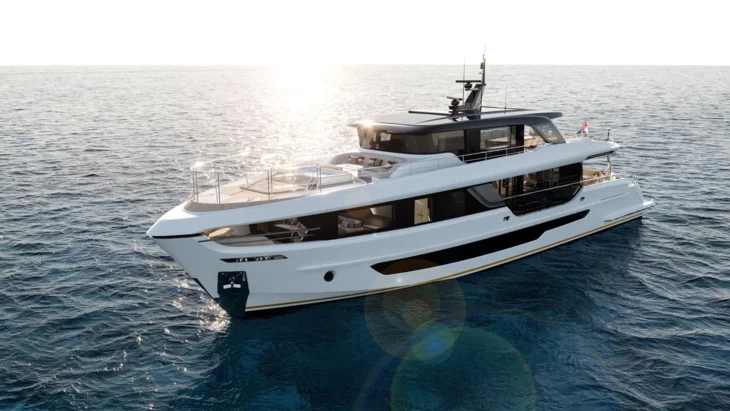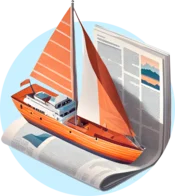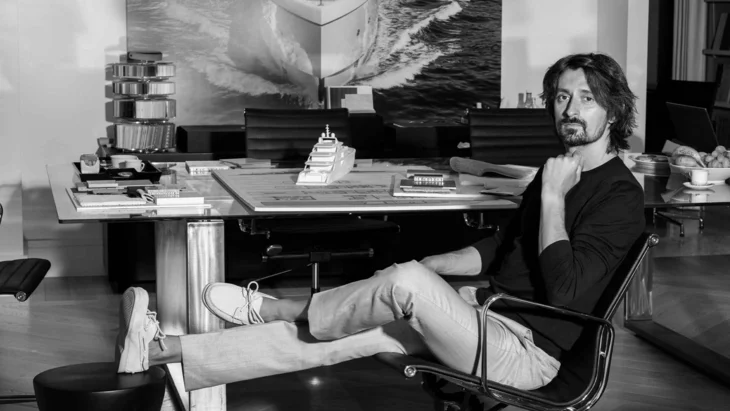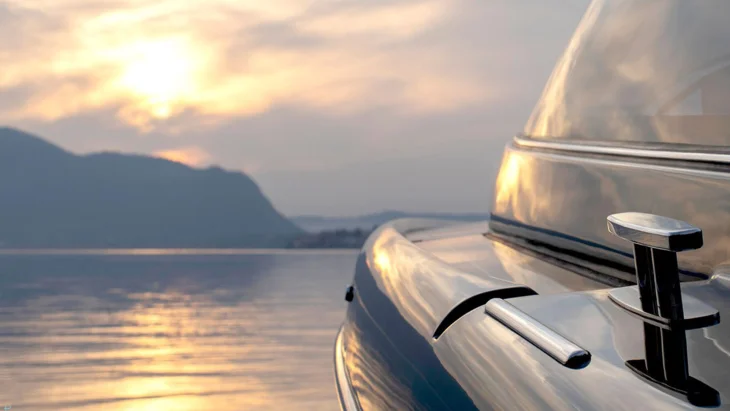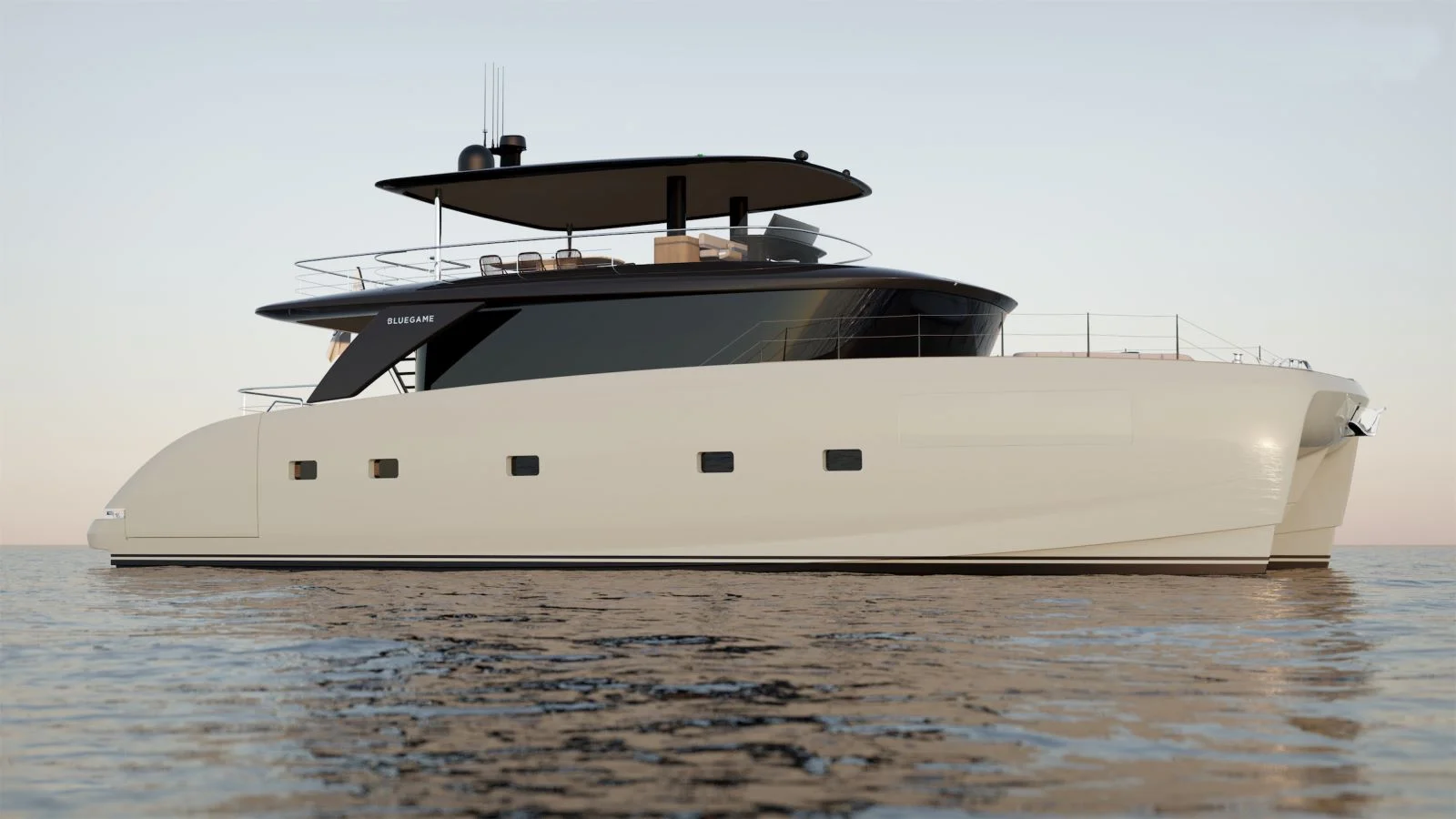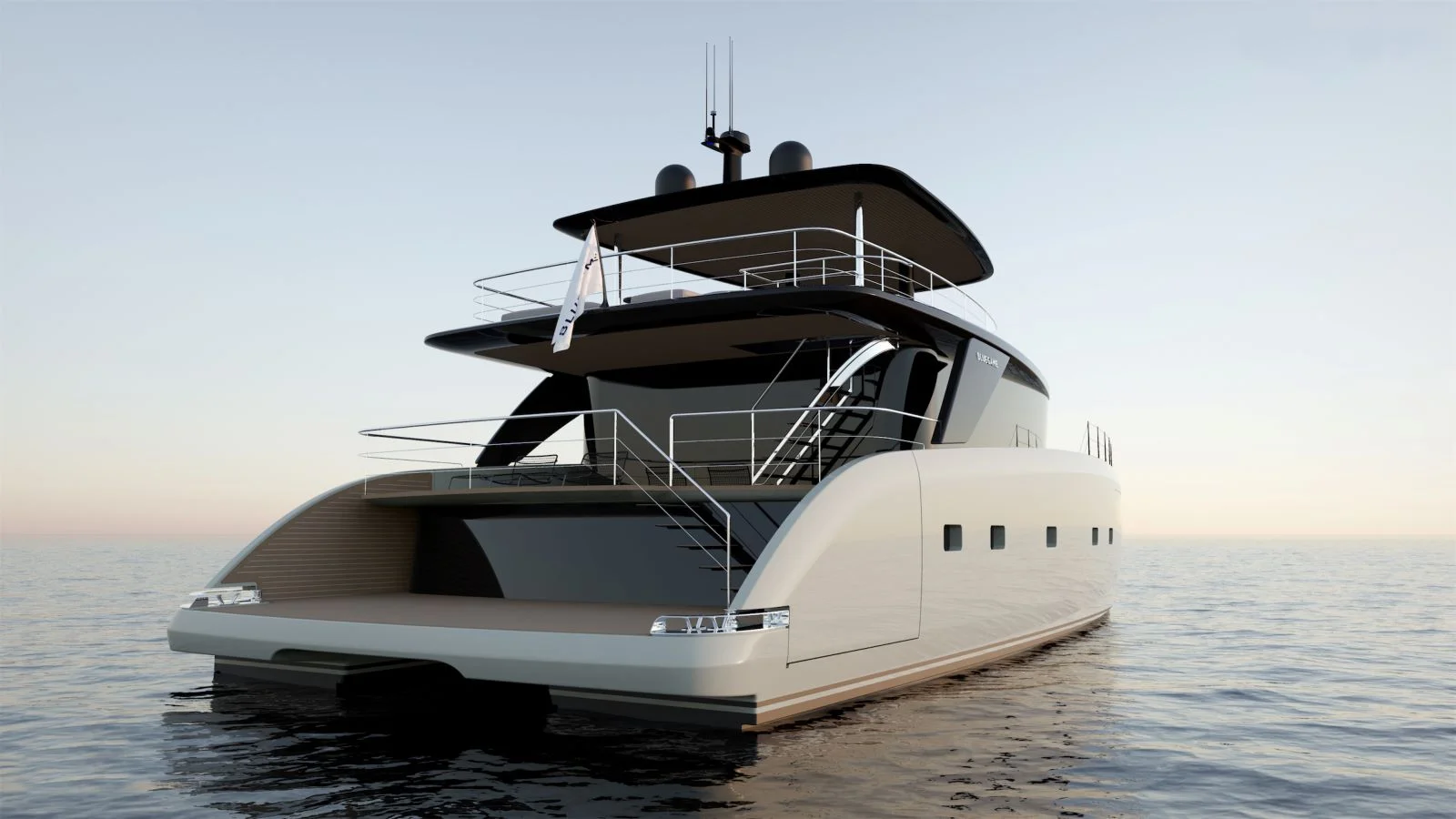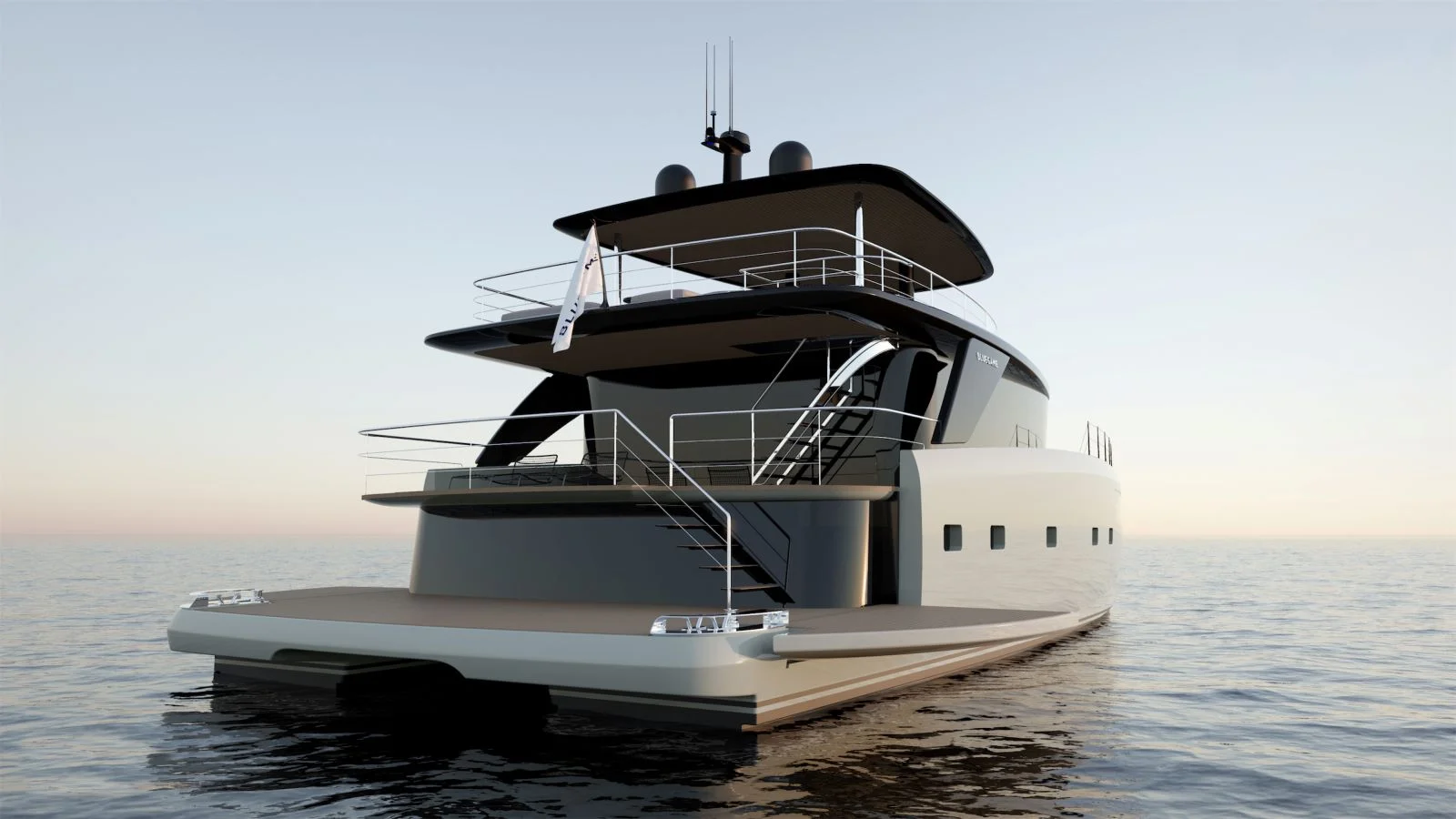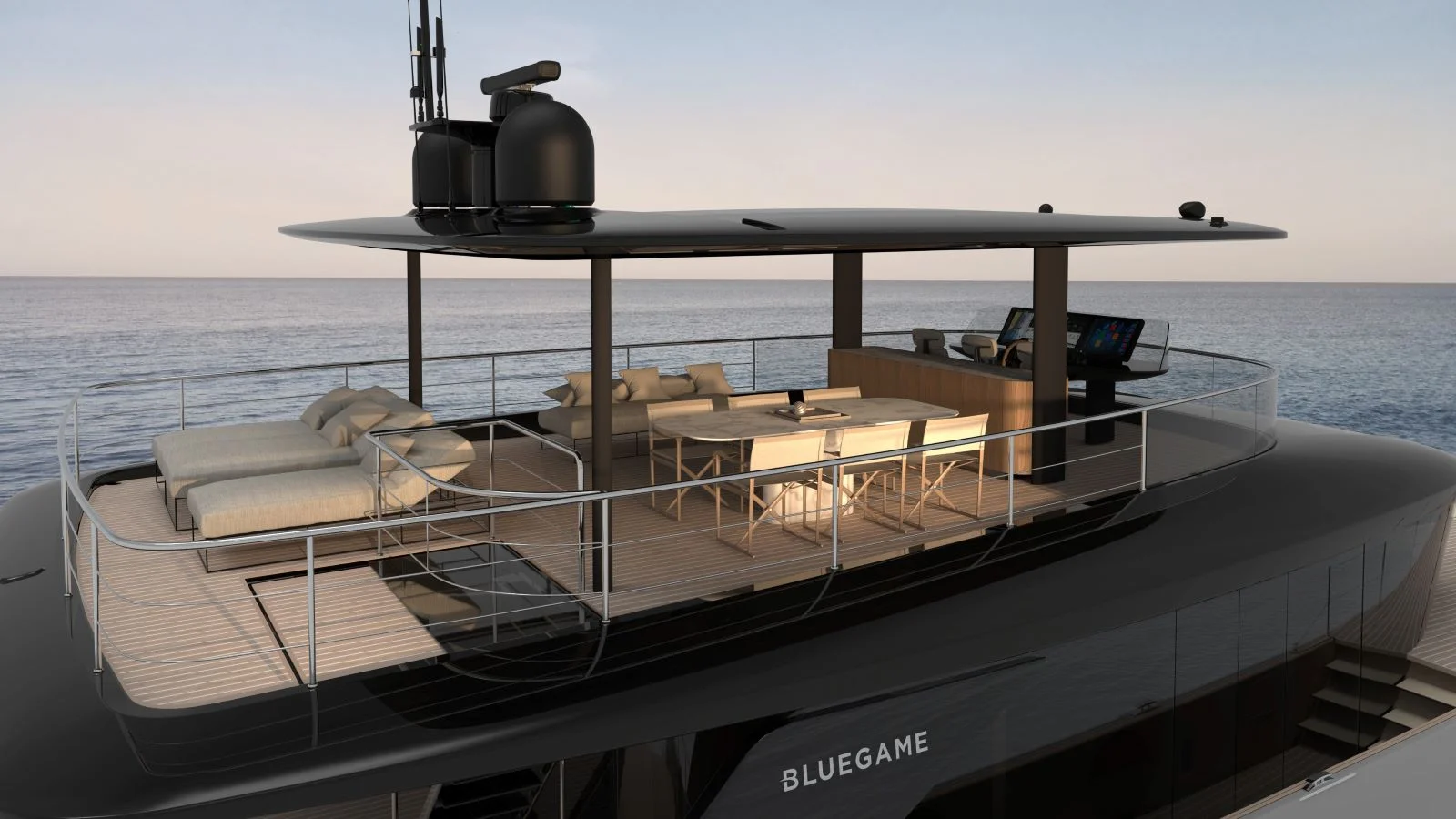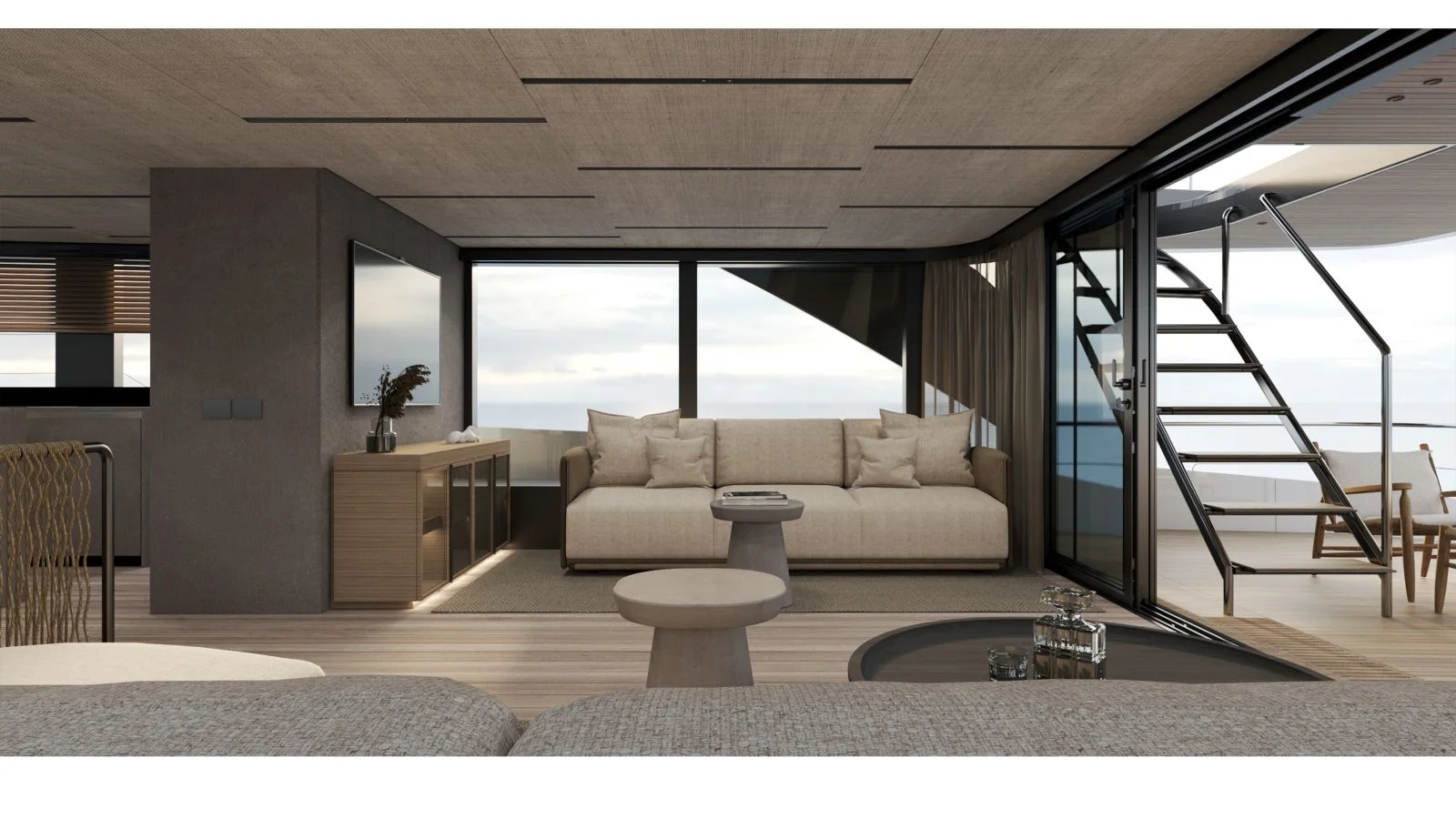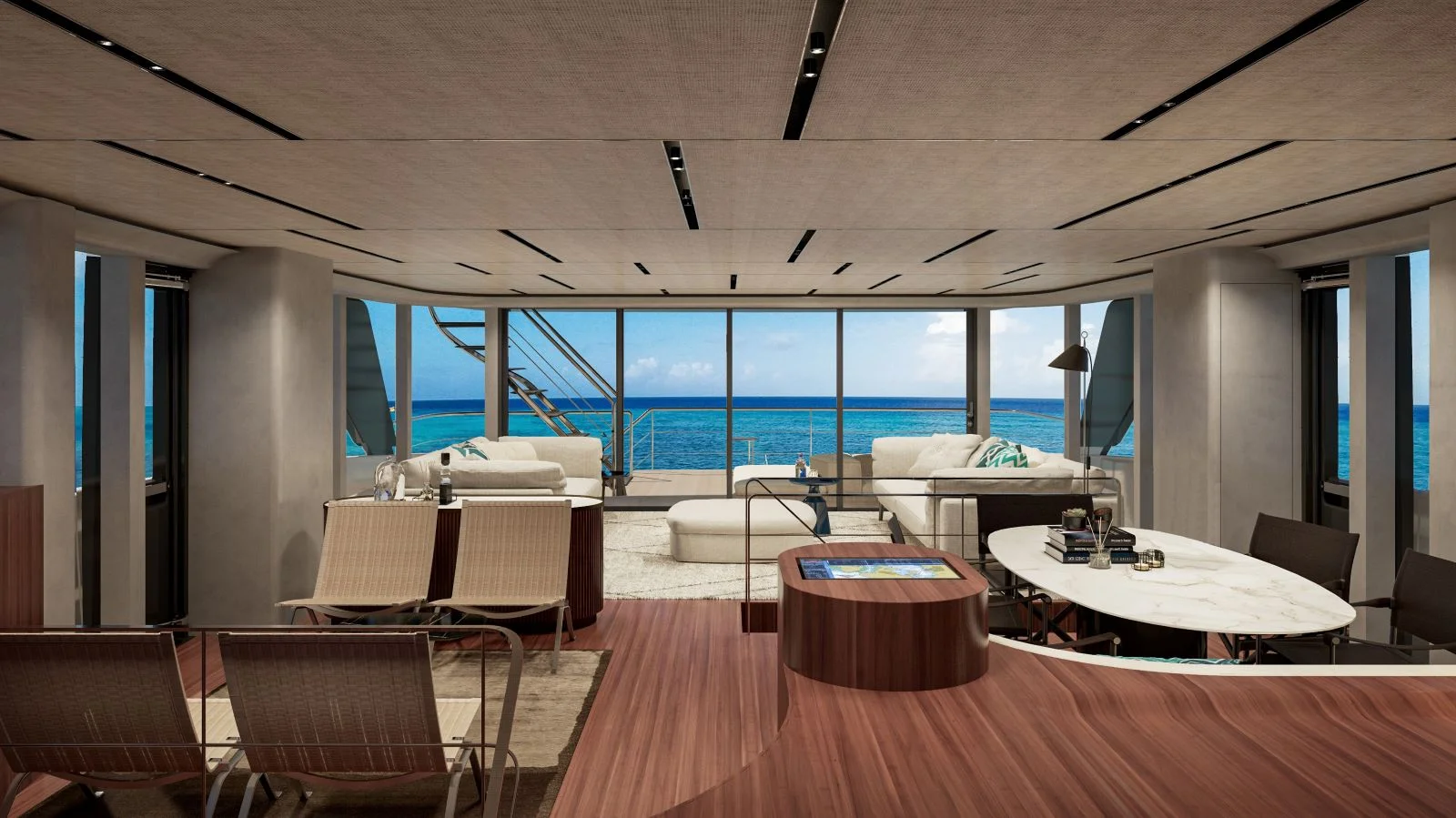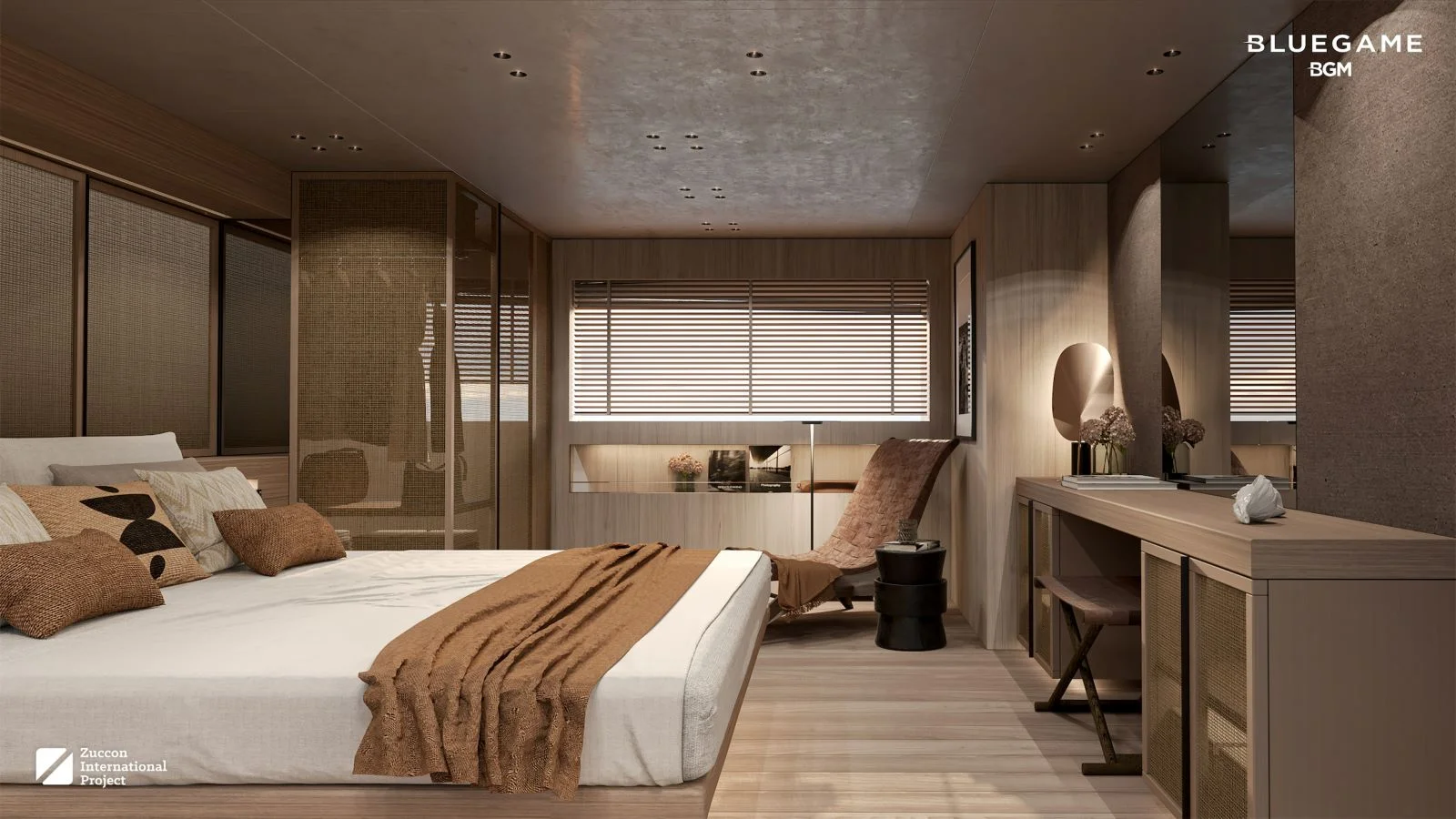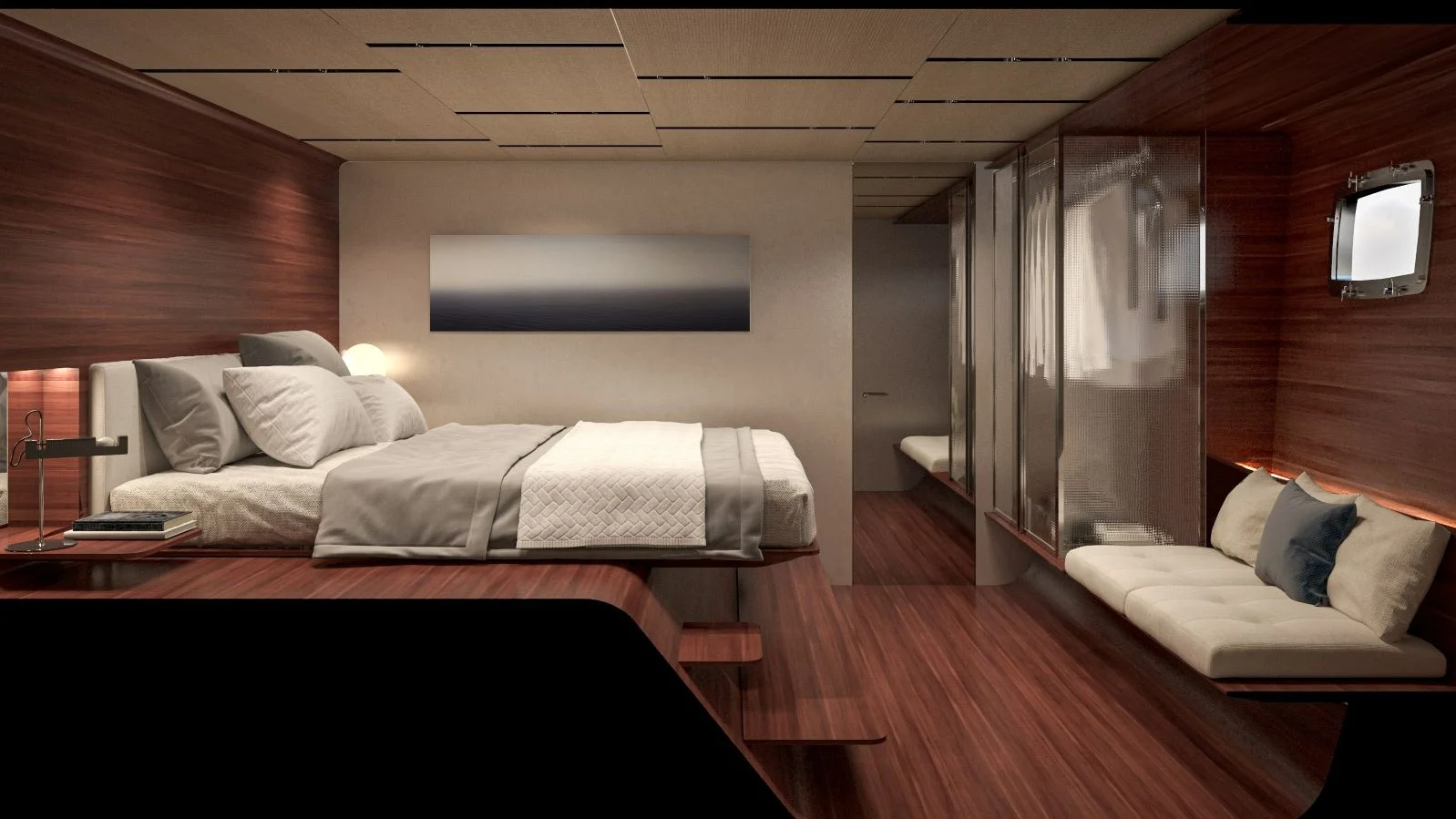Mystery-multihull: Bluegame BGM75 world premier
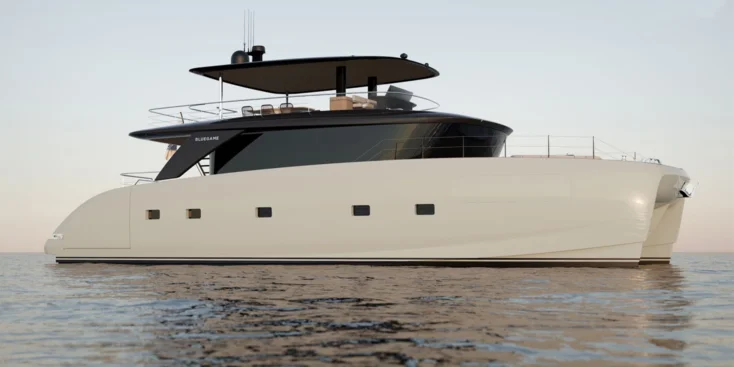
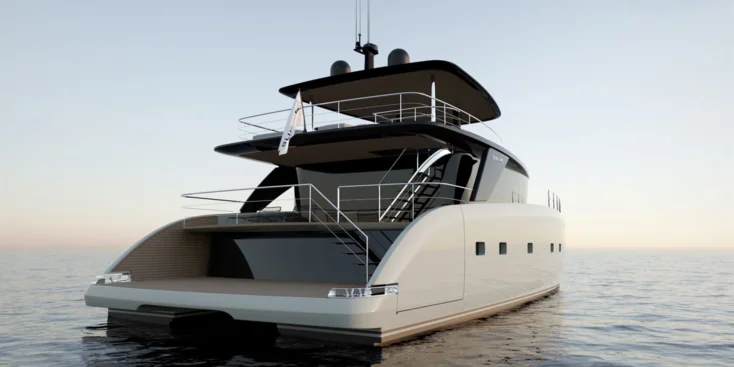
Bluegame: inception
The Bluegame brand appeared back in 2004, when its creator, Italian sailor and architect Luca Santella set out to make motor yachts unlike everything available on the market – fast, seaworthy, maneuverable and fuel efficient. There were no boats that could meet all of these requirements at that time. A famous American hull designer Lou Codega joined the project later on. What they got in the end was called a SUB (Sport Utility Boat), which in fact laid the foundation for the segment of crossover yachts that are so popular today. What matters most is that Santella had the courage to change the traditional architecture of yachts, reconsidering both open decks and interior space layouts completely.
Had anyone often seen a saloon on the lower deck before? Or a master suite with an exit right onto the swim platform? Bluegame’s new ideas drew the attention of one of the largest Italian shipyards, Sanlorenzo, famous for a similar non-trivial approach to their yachts design. No wonder it didn’t take this tandem long to come up with even more daring projects.
Hybrid of a yacht and a catamaran
BG and BGX ranges models that Bluegame has been making for a long time are quite unusual, too. But the new BGM 75, which will hopefully start a whole new range of its own, is not like anything on the market today. BGM75 is Bluegame’s first model with two hulls, but it is not actually a catamaran. As the yard puts it, “this model creates a new, parallel segment, far away from the multihulls to date. She is first and foremost a luxurious, beautiful motor yacht that ‘by chance’ has not one hull, but two”.
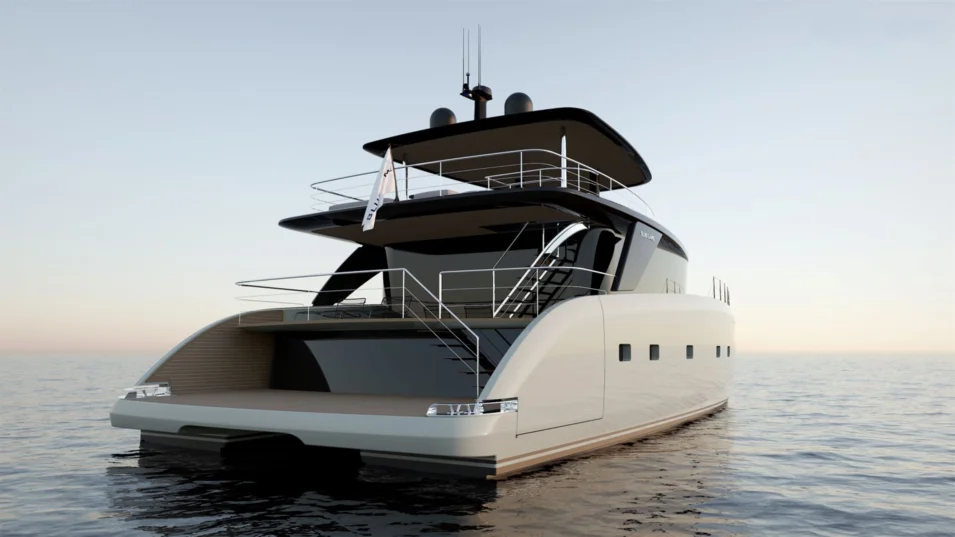
Although BGM 75 has two hulls, one can’t compare it with a catamaran, because her proportions are dramatically different from a typical catamaran outline, reminding one of a square box. BGM 75’s hull width has been reduced to the average size between a catamaran and a monohull vessel. This allowed one to unite both hulls into single decks just like on a monohull, but with far larger space and an opportunity to have a huge, full-beam master suite of over 8 meters wide! This kind of layout is simply not possible for a traditional catamaran, as the floating hulls are too far apart.

IPS and the sun
The hull is made with the use of carbon fiber. Its lightness as well as Volvo Penta IPS ensure low fuel consumption: according to the yard’s statistics it is 50% less than of a traditional monohull of the same volume.
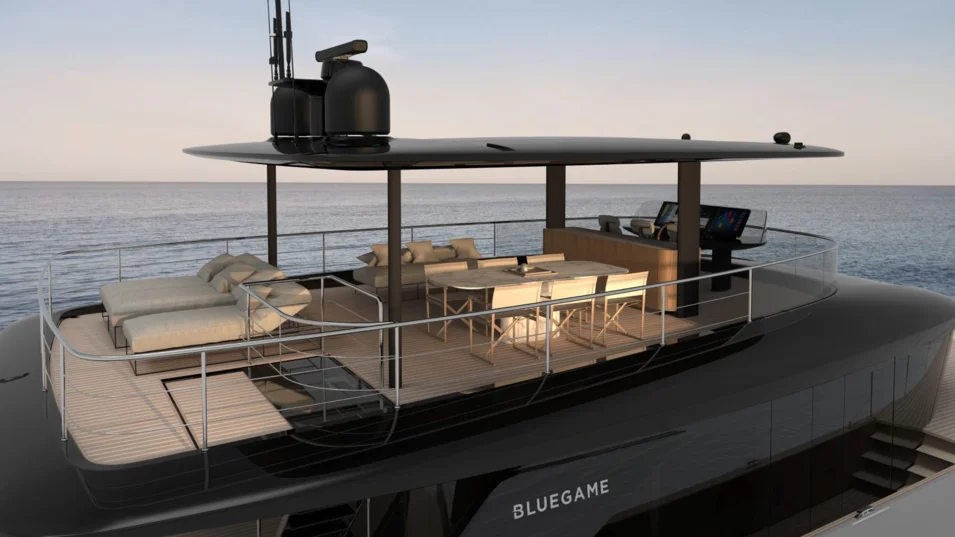
One can choose between a pair of IPS700 (550 hp each) or a twin IPS800 (625 hp each) with D8 engines. The maximum speed for the more powerful option is 21 knots, the cruising one is 17-18 knots. The yard says that fuel consumption at the speed of 18 knots is 180 l/h. With the total diesel reserve of 5,000 liters in this mode it will last for 500 NM. We still have to test the data after the premier, but it is quite likely that the range will increase considerably in the economy mode, which will become a real present for all those fond of long, leisurely journeys. Moreover, 56 solar panels integrated into the superstructure are capable of providing the yacht with extra 5 kW of clean energy, which will cover a lot of the needs on board without using diesel generators.
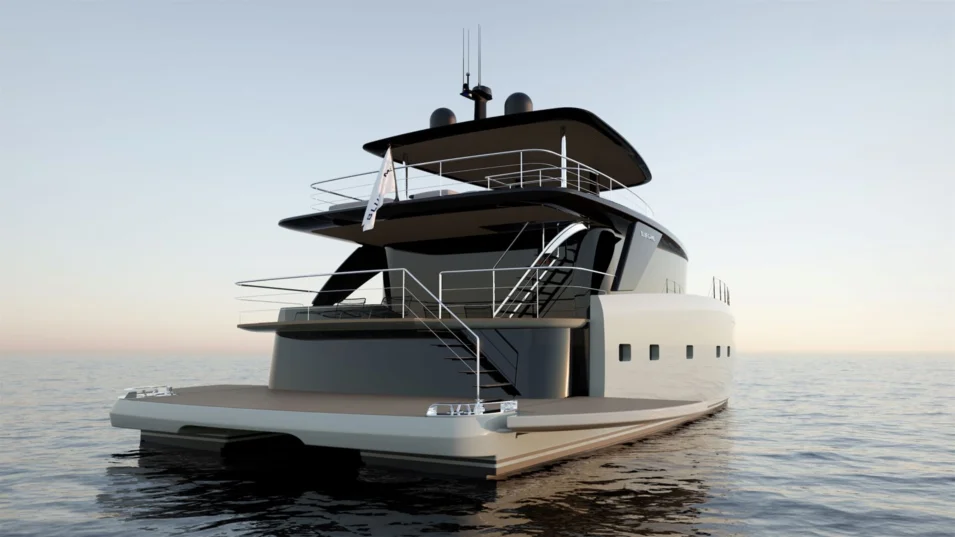
Layout
One should note that Bluegame BGM 75 looks like a catamaran only if you look at her from the bow. From the stern she looks like a monohull with a spacious beach club, while between the hulls there is a large garage for a tender and water toys that are launched onto water automatically. Alternative layouts have been designed for all the levels of the boat – the main deck, the lower deck and the flybridge. One ‘set’ comes from Zuccon International Project, which is in charge of all Bluegame and Sanlorenzo yachts design today. The other one is from Piero Lissoni, an architect, who joined Sanlorenzo as its art director and takes part in selected projects, making up fantastic interiors for them.

But these are ‘basic’ options, so to speak. BGM 75 was conceived with the aim of tailoring its space ideally for a particular owner. There can be three or four cabins onboard, a galley can be located on the main deck or on the lower one, the flybridge can be planned in different ways and there certainly can be absolutely different, individual interiors.
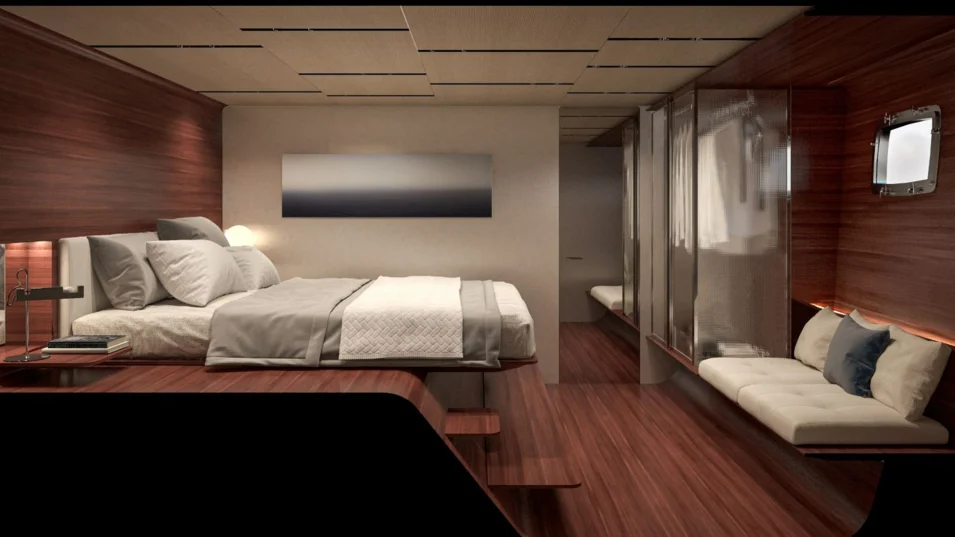
You have successfully subscribed to our newsletter
